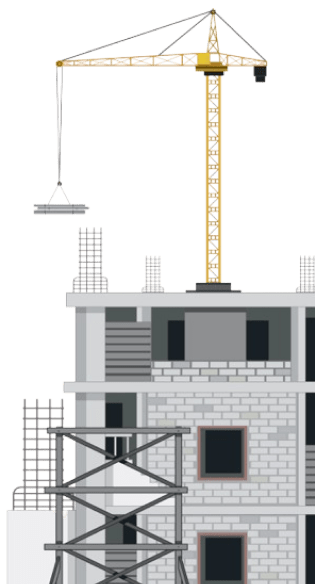On-Site BIM Team Services
In today's complex project delivery environment, immediate technical support and direct collaboration have become essential for successful BIM implementation. Our specialized On-Site BIM Team services provide dedicated Building Information Modeling professionals who are physically embedded within your project environments including design offices, construction sites, or client facilities. These integrated teams deliver immediate technical support, face-to-face collaboration, and hands-on expertise through direct physical presence throughout critical project phases and delivery processes.

Embedded Technical Resources
- Dedicated BIM professionals physically embedded within project environments
- Immediate technical support and real-time problem solving through direct presence
- Face-to-face collaboration enhancing coordination and issue resolution
- Seamless integration with design teams, contractors, and project stakeholders
- Flexible on-site scheduling aligned with critical project phases and requirements
Comprehensive Embedded Technical Support
Our On-Site BIM Team services implement a strategic approach that provides embedded technical resources with immediate accessibility, direct engagement, and physical presence for maximum project impact. We begin with detailed assessment of project requirements, workspace availability, technical needs, and integration objectives to establish clear implementation parameters. Based on these requirements, we develop appropriate team structures with qualified professionals, relevant experience, and collaborative capabilities that support effective on-site integration and technical delivery.
The implementation strategy establishes clear logistics, workspace arrangements, technology setup, and engagement protocols that enable productive embedded operations with proper resources and support systems. These teams provide immediate technical assistance, face-to-face collaboration, and direct problem-solving through physical presence within critical project environments including design offices, construction sites, or collaborative workspace. Throughout implementation, structured management processes maintain quality standards, attendance consistency, and technical performance with appropriate oversight, progress tracking, and continuous improvement. This embedded approach creates fundamentally different collaboration dynamics through direct personal engagement, immediate accessibility, and physical presence that significantly enhance both technical outcomes and stakeholder satisfaction compared to remote-only implementation models.
Strategic Benefits of On-Site BIM Teams
Implementing On-Site BIM Teams delivers transformative advantages throughout project delivery, technical implementation, and stakeholder engagement that fundamentally enhance collaboration effectiveness and project outcomes. The primary benefit comes through immediate responsiveness, where embedded resources provide instant technical support, direct consultation, and real-time assistance without scheduling delays, communication barriers, or response lags inherent in remote support models. For complex coordination challenges, this accessibility typically accelerates issue resolution by 40-60%, significantly reducing technical bottlenecks and coordination delays that frequently impact project schedules.
Communication effectiveness benefits from face-to-face interaction, non-verbal cues, and direct engagement that collectively improve information exchange, reduce misunderstandings, and enhance collaborative problem-solving beyond what virtual communication can achieve. For complex projects, these engagement advantages typically improve decision quality, enhance understanding, and significantly reduce coordination conflicts throughout implementation. Relationship development improves through personal connections, informal interactions, and physical presence that collectively build trust, enhance collaboration, and improve team integration compared to virtual-only engagement. Throughout project execution, these capabilities combine to enhance stakeholder satisfaction, improve technical outcomes, and strengthen project relationships through direct personal engagement and embedded collaboration. By providing technical resources with physical presence, immediate accessibility, and direct problem-solving capabilities, On-Site BIM Teams deliver substantial improvements in both project efficiency and delivery quality, transforming traditional BIM implementation into collaborative project optimization throughout the complete delivery lifecycle.
Applications of On-Site BIM Teams
Fast-Track Projects
Embedded BIM resources for accelerated delivery, compressed schedules, and fast-track implementation with intensive coordination requirements and rapid decision making. Our on-site teams provide immediate technical support, real-time problem solving, and direct collaboration that maintain momentum, prevent delays, and support critical path activities throughout compressed project timelines. This physical presence enables the rapid response, immediate issue resolution, and direct engagement essential for successful delivery of schedule-critical projects where traditional coordination processes would create unacceptable delays.
Complex Coordination Projects
Dedicated on-site resources for technically complex facilities, system-intensive buildings, and coordination-critical projects with demanding integration requirements and spatial constraints. Our embedded teams provide direct coordination leadership, face-to-face collaboration, and immediate issue resolution that enhance system integration, prevent conflicts, and optimize spatial utilization throughout development. This physical presence enables the intensive collaboration, direct stakeholder engagement, and immediate decision support necessary for successful coordination of these challenging facilities where virtual collaboration would be insufficient.
Integrated Project Delivery
Collaborative BIM resources for integrated delivery methods, multi-party contracts, and team-based approaches with shared objectives and collaborative implementation. Our on-site teams provide embedded technical support, cross-discipline facilitation, and collaborative leadership that enhance team integration, support shared goals, and improve collective outcomes throughout development. This physical presence enables the relationship building, direct communication, and collaborative problem-solving essential for successful implementation of these integrated approaches where team effectiveness directly impacts project success.
Construction Implementation
Field-based BIM specialists for active construction sites, installation phases, and building implementation with field coordination requirements and on-site technical needs. Our construction teams provide direct job site support, contractor collaboration, and field-based technical assistance that improve installation coordination, prevent conflicts, and enhance field productivity throughout implementation. This physical presence enables immediate field verification, direct trades coordination, and real-time issue resolution essential for successful construction where remote support would create delays and communication barriers.
Why Choose Us
Professional On-Site BIM Team Services That Enhance Project Collaboration
01
Expert Team
Certified BIM specialists with extensive experience across architectural, MEP, and facade modeling projects
02
Comprehensive Services
End-to-end BIM solutions from initial modeling to coordination, documentation, and facility management
03
Quality Assurance
Rigorous quality control processes ensuring clash-free models, accurate documentation, and seamless collaboration
04
Dedicated Support
Responsive team available to assist throughout your project lifecycle, ensuring timely solutions and continuous assistance

Know More
Frequently Asked Questions
On-Site BIM Teams are dedicated Building Information Modeling professionals who are physically embedded within project environments including design offices, construction sites, or client facilities to provide direct technical support, immediate collaboration, and hands-on expertise throughout project development. Unlike remote resources who operate from separate locations with virtual communication, On-Site Teams provide physical presence, face-to-face interaction, and immediate responsiveness through direct integration within the project environment. This embedded approach has become increasingly critical as projects demand deeper collaboration, faster issue resolution, and more responsive technical engagement throughout complex delivery processes. Effective On-Site Teams enable immediate technical support, enhanced communication, cross-discipline integration, and real-time problem solving that collectively transform project outcomes. Industry experience shows that projects implementing dedicated On-Site BIM Teams typically experience 30-40% faster issue resolution, 25-35% improved coordination efficiency, and significant enhancements in both stakeholder satisfaction and technical quality. Beyond these quantifiable benefits, On-Site Teams provide enhanced project understanding, improved relationship development, better contextual awareness, and more effective integration with design and construction processes that collectively transform traditional BIM implementation into collaborative project optimization throughout the complete delivery lifecycle. This physical presence creates a level of engagement and responsiveness that simply cannot be replicated through remote collaboration regardless of communication technology or virtual meeting effectiveness.
Our On-Site BIM Team implementation follows a structured methodology that systematically establishes embedded technical resources with appropriate integration, workflows, and engagement protocols for maximum project value. We begin with comprehensive needs assessment, evaluating workspace availability, technical requirements, integration objectives, and resource needs to establish clear implementation parameters and performance expectations. Initial planning defines appropriate team structure, skill requirements, on-site schedule, and workspace needs based on project complexity, site conditions, and facility constraints. The team formation process identifies qualified professionals with relevant experience, technical capabilities, and interpersonal skills that support effective on-site integration and collaborative engagement. Site preparation coordinates workspace requirements, technology setup, security access, and facility arrangements that enable effective on-site operations with appropriate resources and support systems. For operational integration, we establish clear workflows, responsibility matrices, communication protocols, and engagement processes that create seamless connection between the On-Site Team and existing project resources. Technical infrastructure includes appropriate hardware configuration, software installation, network access, and collaboration tools that support effective on-site production with proper security and system compatibility. Implementation planning establishes phased introduction beginning with relationship development and process integration before progressing to technical production and specialized services based on project requirements and team capabilities. Throughout establishment, continuous assessment evaluates integration effectiveness, identifies improvement opportunities, and implements enhancement measures that optimize on-site performance and team contribution. This systematic approach creates effective embedded resources that enhance project delivery regardless of complexity or team environment, providing responsive technical capabilities that integrate seamlessly with existing processes while maintaining consistent quality and reliable performance throughout project execution. The physical presence establishes collaborative relationships and direct engagement that significantly enhance both technical outcomes and stakeholder satisfaction compared to remote-only implementation approaches.
Our On-Site BIM Teams provide comprehensive technical capabilities and specialized skills delivered through direct physical presence and embedded engagement across diverse project applications. For design integration, teams include model development specialists, documentation experts, technical coordinators, content creators, and visualization professionals with appropriate software proficiency and design understanding for immediate support within design team environments. Construction support incorporates coordination managers, clash specialists, field modelers, installation planners, and fabrication detailers with construction knowledge and implementation experience delivered directly on project sites or contractor offices. Project management resources include embedded BIM managers, process specialists, technical leaders, quality controllers, and workflow experts with coordination capabilities and implementation knowledge integrated within project leadership environments. For client representation, teams provide owner's representatives, technical advocates, quality verifiers, and standard enforcers with appropriate expertise and oversight capabilities embedded within owner organizations or project teams. Technical specialization includes reality capture specialists, laser scanning technicians, field verification experts, and site modeling professionals who combine physical measurement with digital implementation through direct site presence. Collaboration facilitation incorporates meeting leaders, workshop facilitators, training specialists, and engagement coordinators who enhance team interaction and knowledge transfer through direct personal engagement. Each On-Site Team is configured with appropriate skill combinations based on specific project requirements, physical environments, and technical objectives, creating tailored embedded resources that effectively support specific implementation needs regardless of project type or application complexity. The physical presence enables contextual understanding, relationship development, and direct engagement that significantly enhance both technical contribution and team integration compared to remote-only service approaches. Throughout implementation, team capabilities continuously evolve through structured development, knowledge exposure, and skill enhancement that improve service quality and technical proficiency, delivering increasingly sophisticated support that adapts to changing project needs throughout the complete delivery process.
On-Site BIM Teams deliver transformative improvements in project coordination and issue resolution through physical presence, direct engagement, and embedded collaboration that fundamentally enhance technical integration and problem-solving effectiveness. The primary coordination advantage comes through immediate accessibility, where embedded resources provide instant technical support, direct consultation, and real-time assistance without scheduling delays, communication barriers, or response lags inherent in remote support models. For complex coordination challenges, this responsiveness typically accelerates issue resolution by 40-60%, significantly reducing coordination bottlenecks and technical delays that frequently impact project schedules and team productivity. Contextual understanding provides significant advantages through direct environmental exposure, stakeholder interaction, and process observation that create comprehensive awareness of project dynamics, team relationships, and decision-making contexts beyond technical documentation alone. This enhanced understanding enables more effective coordination strategies, appropriate solution development, and tailored technical approaches that address both explicit requirements and implicit needs throughout implementation. For meeting effectiveness, physical presence enables direct participation, visual communication, real-time model manipulation, and immediate clarification that collectively improve decision quality, reduce misunderstandings, and enhance collaborative outcomes compared to remote-only engagement. Issue prevention benefits from continuous interaction, informal communication, overheard discussions, and early problem identification that enable proactive intervention before formal problems develop, significantly reducing coordination issues through early detection and immediate resolution. When technical challenges occur, the embedded team provides immediate response, in-person investigation, collaborative solution development, and on-the-spot implementation that significantly reduce resolution time and minimize project disruption. Throughout implementation, these capabilities combine to enhance coordination quality, improve technical integration, and accelerate issue resolution through direct personal engagement that creates fundamentally different collaboration dynamics compared to virtual interaction regardless of communication technology or digital platform sophistication. By providing embedded technical resources with immediate accessibility and direct engagement capabilities, On-Site BIM Teams transform traditional coordination processes into integrated problem-solving environments that deliver substantial improvements in both technical outcomes and project efficiency throughout the complete delivery lifecycle.
Hosting On-Site BIM Teams involves practical considerations and logistical requirements that support effective embedded operation within project environments while maintaining both productivity and integration effectiveness. The fundamental workspace requirement includes appropriate desk space, seating arrangements, and physical accommodation with sufficient area, proper ergonomics, and suitable environment for technical professionals engaged in computer-intensive work. This typically involves standard workstations with adequate surface area, appropriate chairs, and physical integration within relevant project teams to support both productive work and effective collaboration. Technical infrastructure requires appropriate power access, network connectivity, internet service, and peripheral connections with sufficient capacity, reliability, and security provisions to support BIM operations within existing facility constraints. For equipment considerations, arrangements must address whether team members will utilize client-provided computers, bring their own hardware, or implement hybrid approaches with appropriate security protocols, software licensing, and system compatibility to ensure technical functionality. Access provisions include building entry, security clearance, credential issuance, and facility authorization with appropriate protocols, scheduling accommodation, and administrative processing that enable consistent team presence without disruption or access limitations. For extended engagements, storage arrangements may address secure equipment storage, personal item accommodation, reference material organization, and work product management between sessions with appropriate security and accessibility. Schedule coordination establishes appropriate on-site hours, attendance expectations, meeting participation, and availability parameters that align with project operations, team schedules, and critical activities to maximize value from physical presence. Throughout implementation, accommodation requirements may evolve based on team size, project phase, and engagement objectives with appropriate flexibility and adjustment mechanisms that maintain effective embedded operations regardless of changing project conditions or facility limitations. While these logistical considerations require initial planning and ongoing management, the significant project benefits delivered through physical presence and direct engagement typically justify the additional facility requirements and administrative coordination compared to remote-only implementation approaches. By effectively addressing these practical considerations through structured planning and clear communication, On-Site BIM Teams can establish productive embedded operations that maximize value delivery while minimizing facility disruption or administrative complexity throughout the complete engagement period.
On-Site BIM Teams provide fundamental advantages compared to remote or offshore resources through physical presence, direct engagement, and embedded collaboration that transform both technical delivery and project integration throughout implementation. The primary differentiator involves immediate accessibility, where on-site resources provide instant assistance, direct consultation, and real-time support without communication delays, scheduling barriers, or time zone differences that frequently impact remote team effectiveness. For urgent issues, this responsiveness typically accelerates resolution by 50-70% while eliminating the frustration, productivity disruption, and schedule impacts associated with delayed remote response regardless of communication technology or virtual platform sophistication. Relationship development benefits from face-to-face interaction, personal connections, informal communication, and physical presence that collectively build trust, enhance understanding, and improve collaboration effectiveness beyond what virtual-only engagement can achieve. These stronger relationships typically improve team integration by 30-50%, enhance communication quality, and substantially improve collaboration outcomes throughout project delivery. Contextual awareness provides significant advantages through environmental observation, direct process exposure, overheard discussions, and non-verbal communication that create comprehensive project understanding beyond documented information exchange. This enhanced awareness enables more effective technical support, appropriate implementation approaches, and tailored solution development that address both explicit requirements and implicit needs throughout project delivery. Meeting effectiveness improves through physical participation, direct interaction, immediate clarification, and non-verbal communication that enhance decision quality, reduce misunderstandings, and improve collaborative outcomes compared to virtual attendance. For complex coordination, the ability to gather relevant stakeholders, examine issues collectively, and implement solutions immediately provides fundamental advantages over distributed resolution processes regardless of collaboration platform capabilities. While on-site resources typically involve higher costs than offshore alternatives, the substantial improvements in resolution speed, coordination quality, team integration, and project outcomes typically deliver superior overall value when total project impacts and delivery results are considered comprehensively. This value differential becomes particularly significant for complex projects, compressed schedules, and collaborative environments where communication efficiency and integration effectiveness directly impact project success beyond simple production metrics or hourly rate considerations. By providing embedded technical resources with immediate accessibility and direct engagement capabilities, On-Site BIM Teams deliver unique implementation advantages that cannot be replicated through remote models regardless of technology investment or virtual collaboration sophistication.
On-Site BIM Teams deliver particularly significant value for specific project types and delivery phases where direct engagement, immediate responsiveness, and embedded collaboration provide substantial implementation advantages beyond remote support models. For complex coordination projects including healthcare facilities, technical laboratories, and industrial installations with dense system integration and spatial constraints, on-site presence enables immediate conflict resolution, direct stakeholder engagement, and collaborative problem-solving that substantially improve coordination outcomes and reduce technical delays compared to distributed processes. Fast-track delivery methods including design-build, integrated project delivery, and accelerated construction benefit from embedded technical resources through immediate decision support, rapid issue resolution, and direct team integration that maintain schedule momentum, reduce communication delays, and support the intensive collaboration essential for compressed timelines and concurrent processes. During intensive design phases including schematic development, design coordination, and documentation production, on-site teams provide immediate technical support, direct designer collaboration, and real-time assistance that improve both design quality and documentation efficiency while reducing technical barriers and workflow disruptions. For construction implementation phases including pre-construction coordination, field installation, and system integration, embedded resources deliver significant advantages through job site presence, contractor interaction, and direct field engagement that enhance construction planning, improve installation coordination, and support rapid field issue resolution throughout implementation. During critical transition periods including design handover, construction kickoff, and substantial completion, physical presence enables smooth information transfer, direct stakeholder engagement, and effective process transition through personal involvement and relationship continuity that maintain momentum and reduce disruption during key project transitions. Projects with multiple stakeholders, diverse team composition, or complex organizational structures benefit from embedded resources through direct relationship development, personal communication, and physical presence that enhance trust, improve understanding, and facilitate effective collaboration across diverse participants and organizational boundaries. While On-Site BIM Teams provide value across diverse project types and delivery phases, these specific applications typically deliver particularly significant benefits where the unique advantages of physical presence, direct engagement, and embedded collaboration directly address critical success factors, schedule demands, or complexity challenges inherent in specific project contexts and delivery requirements. By strategically deploying On-Site Teams during these high-value phases and applications, organizations can maximize return on investment while achieving substantial improvements in both project outcomes and implementation efficiency throughout critical delivery processes.
Our On-Site BIM Team services provide flexible engagement models and staffing arrangements that accommodate diverse project requirements, schedule parameters, and implementation needs with appropriate commercial terms and operational frameworks. For full-time embedded teams, we provide comprehensive on-site presence with dedicated resources maintaining continuous physical attendance within project environments throughout complete delivery phases with consistent staffing, permanent workspace, and full integration within host organizations. This model typically operates through monthly retainers, dedicated resource agreements, or phase-based contracts with clearly defined team composition, attendance expectations, and performance requirements that ensure reliable presence and consistent support throughout extended engagement periods. Part-time deployment models provide scheduled on-site presence with defined attendance patterns including specific days per week, alternating schedules, or regular rotation patterns that maintain consistent physical presence while optimizing resource utilization for projects that don't require continuous full-time support. For milestone-based engagements, on-site presence aligns with critical project phases, key coordination periods, or specific delivery milestones with intensive embedded support during high-value periods followed by remote assistance during intermediate phases to optimize resource deployment throughout project lifecycle. Hybrid models combine scheduled on-site presence with remote support through defined attendance patterns, virtual backup resources, and integrated communication approaches that provide physical presence when most valuable while maintaining continuous technical support across complete project schedules. For staff composition, options include individual technical specialists working within client teams, complete technical units with diverse capabilities, or hybrid arrangements with team leaders supported by remote production resources based on project requirements and organizational structure. Duration options range from short-term assignments addressing specific coordination challenges through medium-term engagements supporting critical project phases to long-term relationships extending across complete project lifecycles or multiple related initiatives. Throughout implementation, staffing flexibility addresses changing project requirements, schedule adjustments, and evolving technical needs with appropriate scaling mechanisms, resource substitution protocols, and capability enhancement options that maintain effective support regardless of project evolution or changing implementation parameters. Each engagement model includes clear attendance expectations, performance metrics, quality standards, and delivery requirements with appropriate management oversight, progress reporting, and issue resolution that ensure accountability and service quality regardless of specific arrangement or schedule structure. This flexible framework delivers appropriate on-site presence regardless of project parameters, schedule constraints, or technical requirements, providing tailored embedded support that maximizes value delivery while accommodating practical limitations and operational realities throughout the complete project lifecycle.
Wide Range of SERVICES
Other Manpower & Staffing
Browse our BIM staffing and resource solutions that provide skilled professionals to augment your team and enhance your project capabilities.
Access dedicated domestic BIM modeling teams to supplement in-house capabilities, provide local expertise, and enhance project delivery.









